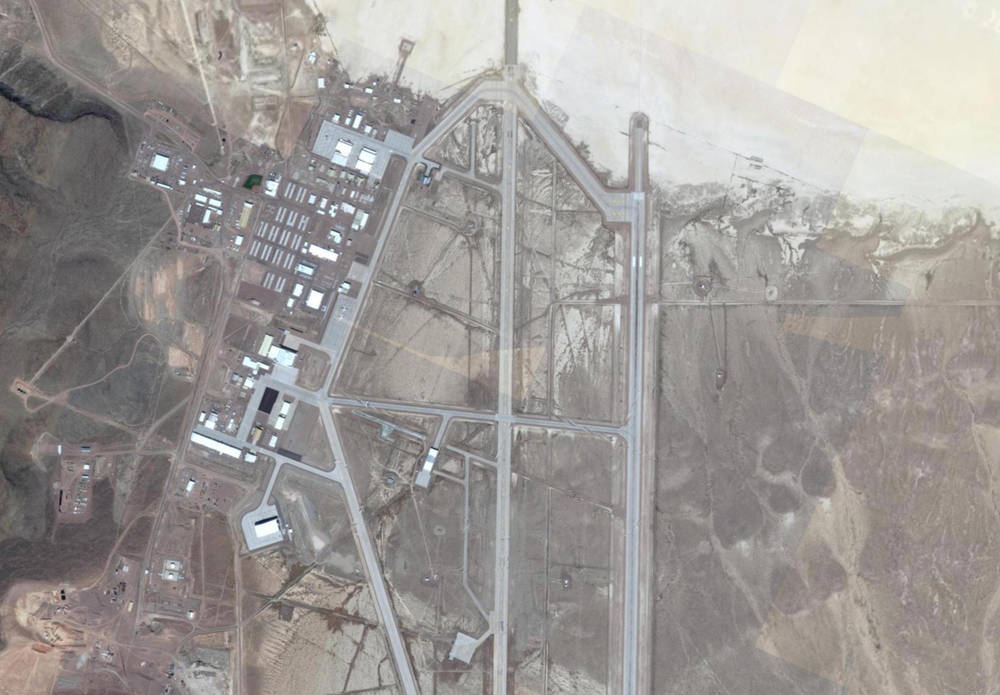Closed-door reviews of risks and benefits of studies should be made public, some scientists say.



The hype about artificial intelligence is unavoidable. From Beijing to Seattle, companies are investing vast sums into these data-hungry systems in the belief that they will profoundly transform the business landscape. The stories in this special report will deepen your understanding of a technology that may reshape our world.
© 2019 Fortune Media IP Limited. All Rights Reserved. Use of this site constitutes acceptance of our Terms of Use and Privacy Policy (Your California Privacy Rights).
Fortune may receive compensation for some links to products and services on this website. Offers may be subject to change without notice.
Quotes delayed at least 15 minutes. Market data provided by Interactive Data. ETF and Mutual Fund data provided by Morningstar, Inc. Dow Jones Terms & Conditions: http://www.djindexes.com/mdsidx/html/tandc/indexestandcs.html.

This year marks the Eighth Review Conference (RevCon) of the Biological Toxins and Weapons Convention (BWC). At the same time, ongoing international efforts to further and more deeply investigate the brain’s complex neuronal circuitry are creating unprecedented capabilities to both understand and control neurological processes of thought, emotion, and behavior. These advances have tremendous promise for human health, but the potential for their misuse has also been noted, with most discussions centering on research and development of agents that are addressed by existing BWC and Chemical Weapons Convention (CWC) proscriptions. In this article, we discuss the dual-use possibilities fostered by employing emergent biotechnologic techniques and tools—specifically, novel gene editors like clustered regular interspaced short palindromic repeats (CRISPR)—to produce neuroweapons. Based on our analyses, we posit the strong likelihood that development of genetically modified or created neurotropic substances will advance apace with other gene-based therapeutics, and we assert that this represents a novel—and realizable—path to creating potential neuroweapons. In light of this, we propose that it will be important to re-address current categorizations of weaponizable tools and substances, so as to better inform and generate tractable policy to enable improved surveillance and governance of novel neuroweapons.
Keywords: : CRISPR, Gene editing, Neuroweapon, Neurotherapeutic pathways, Dual-use neuroscience, Biosecurity policy.
T his year marks the Eighth Review Conference (RevCon) of the Biological Toxins and Weapons Convention (BWC), the purpose of which is to ensure that the convened parties’ directives continue to be relevant to and viable for prohibiting the development, production, and stockpiling of biological weapons in the face of newly emerging scientific advancements and biotechnologies. Apropos of issues raised at previous RevCons and elsewhere, there are growing concerns about current and future weaponization of neurobiological agents and tools (ie, “neuroweapons”1–6).
After getting a considerable success in convincing scientists and investors, in the last decades, that undoing aging through a damage repair approach is possible and desirable, Aubrey de Grey is turning his advocacy efforts to politicians. In this video, he explains why.
Aubrey de Grey delivers a keynote on the next steps for longevity for policy makers.
Dr Aubrey de Grey is a biomedical gerontologist based in Mountain View, California, USA, and is the Chief Science Officer of SENS Research Foundation, a California-based 501©(3) biomedical research charity that performs and funds laboratory research dedicated to combating the ageing process. He is also VP of New Technology Discovery at AgeX Therapeutics, a biotechnology start up developing new therapies in the field of biomedical gerontology. In addition, he is Editor-in-Chief of Rejuvenation Research, the world’s highest-impact peer-reviewed journal focused on intervention in ageing. He received his BA in computer science and Ph.D. in biology from the University of Cambridge. His research interests encompass the characterisation of all the types of self-inflicted cellular and molecular damage that constitute mammalian ageing and the design of interventions to repair and/or obviate that damage. Dr de Grey is a Fellow of both the Gerontological Society of America and the American Aging Association, and sits on the editorial and scientific advisory boards of numerous journals and organisations. He is a highly sought-after speaker who gives 40–50 invited talks per year at scientific conferences, universities, companies in areas ranging from pharma to life insurance, and to the public.

In 1948 Frank Wisner was appointed director of the Office of Special Projects. Soon afterwards it was renamed the Office of Policy Coordination (OPC). This became the espionage and counter-intelligence branch of the Central Intelligence Agency. Wisner was told to create an organization that concentrated on “propaganda, economic warfare; preventive direct action, including sabotage, anti-sabotage, demolition and evacuation measures; subversion against hostile states, including assistance to underground resistance groups, and support of indigenous anti-Communist elements in threatened countries of the free world.”
Later that year Wisner established Mockingbird, a program to influence the domestic American media. Wisner recruited Philip Graham (Washington Post) to run the project within the industry. Graham himself recruited others who had worked for military intelligence during the war. This included James Truitt, Russell Wiggins, Phil Geyelin, John Hayes and Alan Barth. Others like Stewart Alsop, Joseph Alsop and James Reston, were recruited from within the Georgetown Set. According to Deborah Davis, the author of Katharine the Great (1979) : “By the early 1950s, Wisner ‘owned’ respected members of the New York Times, Newsweek, CBS and other communications vehicles.”
In 1951 Allen W. Dulles persuaded Cord Meyer to join the CIA. However, there is evidence that he was recruited several years earlier and had been spying on the liberal organizations he had been a member of in the later 1940s. According to Deborah Davis, Meyer became Mockingbird’s “principal operative”.

The United States Department of Homeland Security’s Cybersecurity and Infrastructure Security Agency (CISA) has issued an alert that strongly urges users and administrators alike to update a VPN with long-since disclosed critical vulnerabilities. “Affected organizations that have not applied the software patch to fix a remote code execution (RCE) vulnerability,” the CISA alert warns, “can become compromised in an attack.” What has dictated the need for this level of Government agency interest and the urgency of the language used? The simple answer is the ongoing Travelex foreign currency exchange cyber-attack, thought to have been facilitated by no less than seven VPN servers that were late in being patched against this critical vulnerability. The vulnerability in question is CVE-2019–11510, first disclosed way back in April 2019 when Pulse Secure VPN also released a patch to fix it.
Critical VPN security vulnerability timeline
The CISA alert provides a telling timeline that outlines how the Pulse Secure VPN critical vulnerability, CVE-2019–11510, became such a hot security potato. Pulse Secure first released an advisory regarding the vulnerabilities in the VPN on April 24, 2019. “Multiple vulnerabilities were discovered and have been resolved in Pulse Connect Secure (PCS) and Pulse Policy Secure (PPS),” that advisory warned, “this includes an authentication by-pass vulnerability that can allow an unauthenticated user to perform a remote arbitrary file access on the Pulse Connect Secure gateway.” An upgrade patch to fix the problem, which had been rated as critical, was made available at the same time. Warning users that the vulnerabilities posed a “significant risk to your deployment,” Pulse Secure recommended patching as soon as possible.

The US government has placed software designed to train neural networks to analyse satellite images under new export controls in a bid to prevent foreign adversaries using said code.
The decision, made by Uncle Sam’s Bureau of Industry and Security (BIS), is effective today. Vendors shipping software subject to the controls – in that the applications help machine learning systems annotate satellite images in a particular way – will have to apply for a license to sell their products to customers outside of the US and Canada.
“Items warrant control for export because the items may provide a significant military or intelligence advantage to the United States or because foreign policy reasons justify control,” the BIS said.
Starfleet Begins
Steven L. Kwast is a retired Air Force general and former commander of the Air Education and Training Command at Joint Base San Antonio-Randolph. A graduate of the United States Air Force Academy with a degree in astronautical engineering, he holds a master’s degree in public policy from Harvard’s Kennedy School of Government. He is a past president of the Air Force’s Air University in Montgomery, Alabama, and a former fighter pilot with extensive combat and command experience. He is the author of the study, “Fast Space: Leveraging Ultra Low-Cost Space Access for 21st Century Challenges.”
Beginning in 2010, and coinciding with the opening of Hillsdale College’s Allan P. Kirby, Jr. Center for Constitutional Studies and Citizenship on Capitol Hill, the College has hosted an annual Constitution Day Celebration in Washington, D.C. to commemorate the signing of the U.S. Constitution on September 17, 1787.
The program—which features speeches, debates, and roundtable discussions—explores the continuing relevance of the Founders’ Constitution for American politics today.
Hillsdale College is an independent institution of higher learning founded in 1844 by men and women “grateful to God for the inestimable blessings” resulting from civil and religious liberty and “believing that the diffusion of learning is essential to the perpetuity of these blessings.” It pursues the stated object of the founders: “to furnish all persons who wish, irrespective of nation, color, or sex, a literary, scientific, [and] theological education” outstanding among American colleges “and to combine with this such moral and social instruction as will best develop the minds and improve the hearts of its pupils.” As a nonsectarian Christian institution, Hillsdale College maintains “by precept and example” the immemorial teachings and practices of the Christian faith.

As access to the internet grows, so do the risks associated with being online. Cybersecurity threats are on the rise as data hackers find new ways to breach through firewalls. Earlier this year bad actors were able to gain access to the administrative serves of India’s largest nuclear power plant with a simple phishing email.
The government want to increase its cyber might to ward off such hazards but experts feel some of its policies might do the exact opposite.
2020 will be a busy year for India with the 5G spectrum auction still pending, Personal Data Protection Bill under discussion, and the deadline for social.
